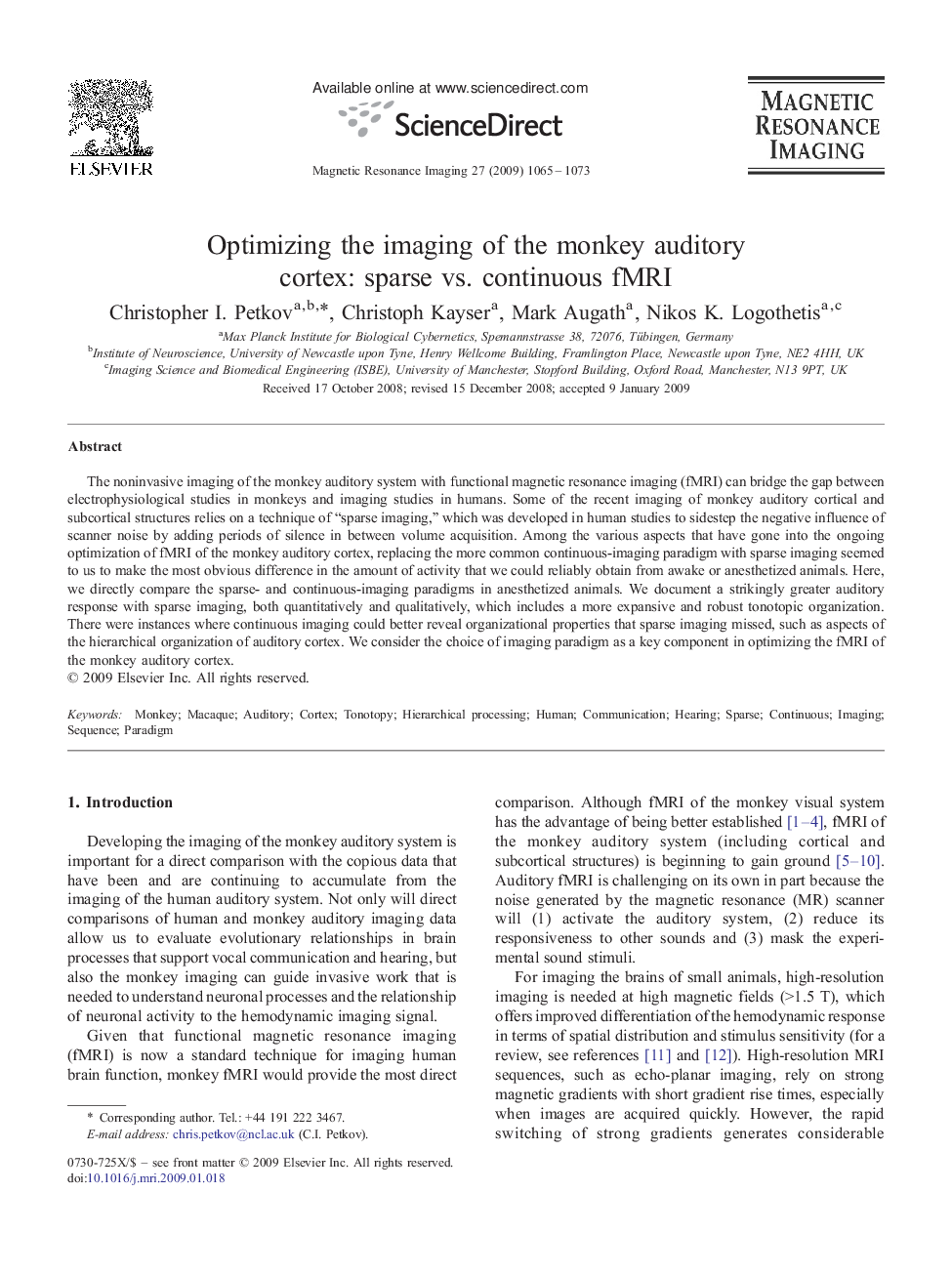| کد مقاله | کد نشریه | سال انتشار | مقاله انگلیسی | نسخه تمام متن |
|---|---|---|---|---|
| 1807755 | 1025283 | 2009 | 9 صفحه PDF | دانلود رایگان |

The noninvasive imaging of the monkey auditory system with functional magnetic resonance imaging (fMRI) can bridge the gap between electrophysiological studies in monkeys and imaging studies in humans. Some of the recent imaging of monkey auditory cortical and subcortical structures relies on a technique of “sparse imaging,” which was developed in human studies to sidestep the negative influence of scanner noise by adding periods of silence in between volume acquisition. Among the various aspects that have gone into the ongoing optimization of fMRI of the monkey auditory cortex, replacing the more common continuous-imaging paradigm with sparse imaging seemed to us to make the most obvious difference in the amount of activity that we could reliably obtain from awake or anesthetized animals. Here, we directly compare the sparse- and continuous-imaging paradigms in anesthetized animals. We document a strikingly greater auditory response with sparse imaging, both quantitatively and qualitatively, which includes a more expansive and robust tonotopic organization. There were instances where continuous imaging could better reveal organizational properties that sparse imaging missed, such as aspects of the hierarchical organization of auditory cortex. We consider the choice of imaging paradigm as a key component in optimizing the fMRI of the monkey auditory cortex.
Journal: Magnetic Resonance Imaging - Volume 27, Issue 8, October 2009, Pages 1065–1073